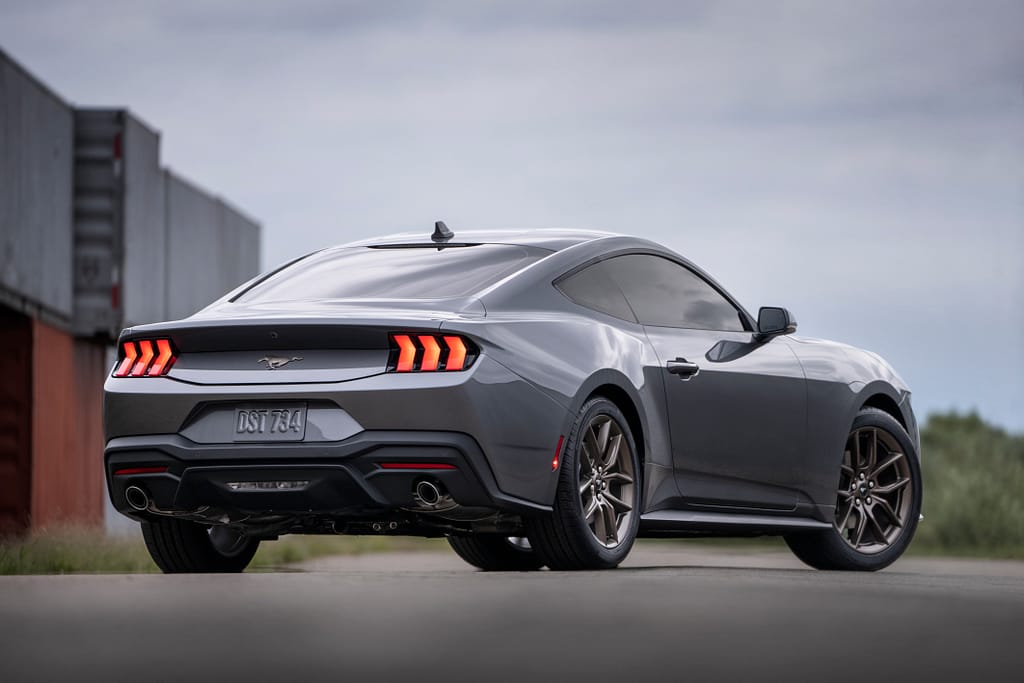Ford leaders Jim Farley Jr. and Bill Ford Jr. recount Ford’s history, how the legacy was almost lost and how Ford once again became a global powerhouse.
“One of the saddest things is a typical ex-CEO. Because they’ve sacrificed it all for their work, they have no close family and they’ve lost their friends along the way, too. There’s nobody telling them how great they are anymore.“
The Ford leaders discuss their shared passions and approaches to work. They put a high value on relationships with employees, maintaining authenticity as leaders and having a work/life balance.

The Ford leaders love to drive the different vehicles across the line-up. They can pick from one of their best-selling pick-ups. Or the can hop in the latest EV, or a high-performance Mustang. Or perhaps they want to take the latest off-road vehicle for a spin. But both are all too aware of what can be lost. Circumstances and events can kill the passion and curiosity needed to remain relevant. In a world where challenges are a way of life, anticipating and reacting to what’s next is key to survival.
Saving America’s Industrial Base
Interestingly enough, Bill Ford, Jr., chose history as his college major. Certainly, the Ford Motor Company has played its part in American history. It served as the arsenal of democracy during World War II. Ford plants produced ventilators during Covid. And Bill Ford apparently agrees with the adage that says history always repeats itself. He says he still loves to read history to predict what happens next.
One of the lessons taught by history is that all strong countries have a strong industrial base, Ford says. And we are fortunate that the current Ford family leader was willing to swallow his pride to fight and win a hard battle to preserve it in America. It was Bill Ford’s willingness to cede operational control to an industry outsider, Boeing Co Executive Vice President Alan Mulally, that ultimately saved the family business.
When Mulally became CEO of Ford in 2006, Bill Ford took the title of Executive Chairman. As he pledged to still be at the company every day, focused on strategic issues, the skeptics questioned just how much leverage Mulally would have at Ford.
Between 2006 and 2008, the Ford Motor Company was losing billions every year as it faced existential challenges during an economic downturn. Regulatory compliance and an economic recession made it hard to make really great cars and trucks. Power struggles among top Ford executives led to the misalignment of brands and lack of consumer preference insight and a slow response to competitive threat of Japanese automakers. Workers suffered from a loss of passion. America’s automotive industry was terrified that insularity was going to kill it.
In the end, Bill Ford and the world credit Mulally’s “working together” principles and practices for transforming Ford Motor Company from a near-bankrupt relic back into its global powerhouse status.
The CEO Succession
Mulally was the active CEO at Ford when he first met Jim Farley, years before he went to work for Ford. Mulally was immediately impressed, commenting on Farley’s hello, his eye contact, and how articulate and genuine he was. Farley’s own grandfather started his career at Henry Ford’s River Rouge Plant in 1918 and Mulally knew he would one day convince Farley to follow in the family footsteps.
But before joining Ford, Farley helped Toyota launch the Lexus luxury brand. Mulally was finally able to take Farley under his wing in 2007 when he joined Ford as global head of marketing and communications. Farley rose steadily, working under CEOs Steve Fields and Jim Hackett after Mulally’s retirement. Farley became Ford’s Global Leader of Operations and COO before being named to the top job in October 2020.
Today’s Automotive Industry Challenges
Farley faces a set of challenges today that are just as daunting as those facing any of the Ford CEOs before him. In today’s environment, supply shortages are still not resolved, and the labor shortage continues. Automakers struggle to remain relevant in a volatile and recession-heavy landscape. And yet this is no time to wait and see what happens. Under Farley’s leadership, a $50 billion investment in electric vehicles poses Ford to lead the next automotive industry revolution.
But at the same time, Farley is a gearhead. He is a collector and racer of vintage vehicles who is as just as excited about the revving of engines and the screeching of tires as Ford’s cult vehicle owners. And with this, he brings a different approach to electrification.
An Opposite Approach
Other automakers have introduced new nameplates rather than attaching all-electric vehicle technology to their consistent sellers. Farley takes an opposite approach, leaning on the brand’s icons to spark a similar emotional response in introducing Ford’s electric vehicle line-up. And the Mach-E Mustang proves the validity of Farley’s theory. Mach-E has indeed led Ford to become the second bestselling brand of EVs in the country. It doesn’t seem to matter that it shares little to nothing with the gas-powered Mustang other than a name.
“Legacy isn’t something you plan for. It’s the fallout of everything you do.”
In a video featured on the Ford media site, Farley and Bill Ford Jr. talked about Ford’s history and discuss their shared passions and approaches to work–relationships with employees, maintaining authenticity as leaders and having a work/life balance.
Bill Ford relates that one of the saddest things is a typical ex-CEO. Because they’ve sacrificed it all for their work, they have no close family and they’ve lost their friends along the way, too. There’s nobody telling them how great they are anymore.
LEARN MORE ABOUT THE THOUGHT PROCESS BEHIND FORD’S LATEST RELEASES OF TWO BRAND ICONS


